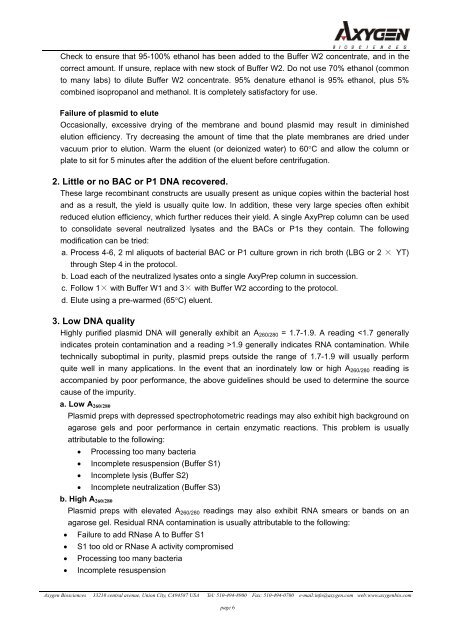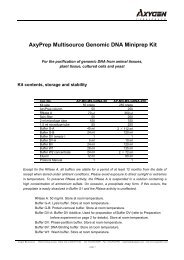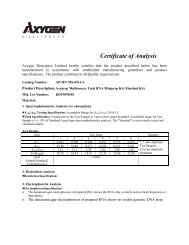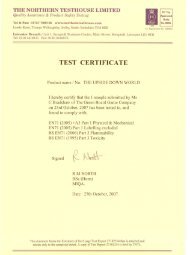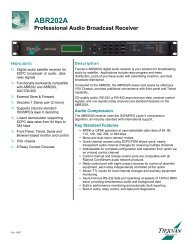You also want an ePaper? Increase the reach of your titles
YUMPU automatically turns print PDFs into web optimized ePapers that Google loves.
Check to ensure that 95-100% ethanol has been added to the Buffer W2 concentrate, and in the<br />
correct amount. If unsure, replace with new stock of Buffer W2. Do not use 70% ethanol (common<br />
to many labs) to dilute Buffer W2 concentrate. 95% denature ethanol is 95% ethanol, plus 5%<br />
combined isopropanol and methanol. It is completely satisfactory for use.<br />
Failure of plasmid to elute<br />
Occasionally, excessive drying of the membrane and bound plasmid may result in diminished<br />
elution efficiency. Try decreasing the amount of time that the plate membranes are dried under<br />
vacuum prior to elution. Warm the eluent (or deionized water) to 60°C and allow the column or<br />
plate to sit for 5 minutes after the addition of the eluent before centrifugation.<br />
2. Little or no BAC or P1 DNA recovered.<br />
These large recombinant constructs are usually present as unique copies within the bacterial host<br />
and as a result, the yield is usually quite low. In addition, these very large species often exhibit<br />
reduced elution efficiency, which further reduces their yield. A single <strong>AxyPrep</strong> column can be used<br />
to consolidate several neutralized lysates and the BACs or P1s they contain. The following<br />
modification can be tried:<br />
a. Process 4-6, 2 ml aliquots of bacterial BAC or P1 culture grown in rich broth (LBG or 2 × YT)<br />
through Step 4 in the protocol.<br />
b. Load each of the neutralized lysates onto a single <strong>AxyPrep</strong> column in succession.<br />
c. Follow 1× with Buffer W1 and 3× with Buffer W2 according to the protocol.<br />
d. Elute using a pre-warmed (65°C) eluent.<br />
3. Low DNA quality<br />
Highly purified plasmid DNA will generally exhibit an A 260/280 = 1.7-1.9. A reading 1.9 generally indicates RNA contamination. While<br />
technically suboptimal in purity, plasmid preps outside the range of 1.7-1.9 will usually perform<br />
quite well in many applications. In the event that an inordinately low or high A 260/280 reading is<br />
accompanied by poor performance, the above guidelines should be used to determine the source<br />
cause of the impurity.<br />
a. Low A 260/280<br />
<strong>Plasmid</strong> preps with depressed spectrophotometric readings may also exhibit high background on<br />
agarose gels and poor performance in certain enzymatic reactions. This problem is usually<br />
attributable to the following:<br />
• Processing too many bacteria<br />
• Incomplete resuspension (Buffer S1)<br />
• Incomplete lysis (Buffer S2)<br />
• Incomplete neutralization (Buffer S3)<br />
b. High A 260/280<br />
<strong>Plasmid</strong> preps with elevated A 260/280 readings may also exhibit RNA smears or bands on an<br />
agarose gel. Residual RNA contamination is usually attributable to the following:<br />
• Failure to add RNase A to Buffer S1<br />
• S1 too old or RNase A activity compromised<br />
• Processing too many bacteria<br />
• Incomplete resuspension<br />
Axygen Biosciences 33210 central avenue, Union City, CA94587 USA Tel: 510-494-8900 Fax: 510-494-0700 e-mail:info@axygen.com web:www.axygenbio.com<br />
page 6


